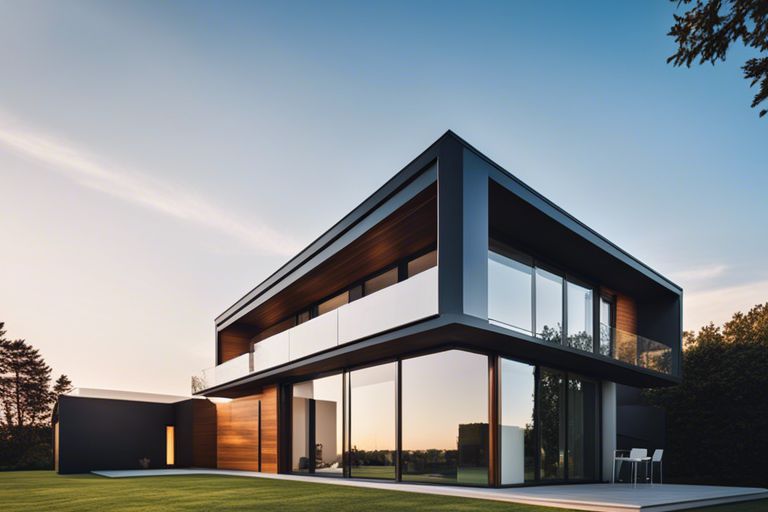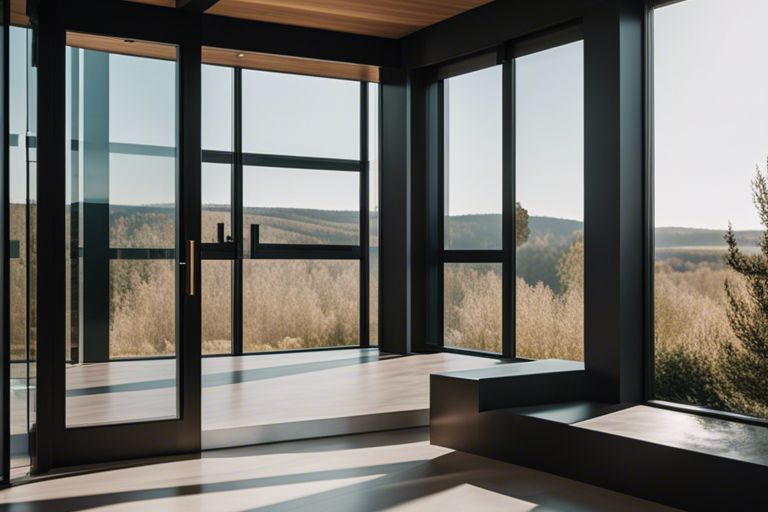When it comes to constructing modern buildings, curtain wall systems play a crucial role in enhancing aesthetics, energy efficiency, and structural integrity. However, there is often confusion surrounding the terms curtain wall glass and glazing. Understanding the difference between the two is essential for architects, developers, and construction professionals to ensure the success of their projects. In this blog post, we will explore the distinct characteristics of curtain wall glass and glazing, highlighting their unique features, functions, and importance in the construction industry.
Key Takeaways:
- Curtain wall glass: Often larger, more complex, and used as a feature in modern architecture.
- Glazing: Typically smaller, more functional, and serves as part of the building envelope.
- Importance: Understanding the differences helps architects and designers choose the right option for their projects.

Understanding Curtain Walls
Definition and Functions
A curtain wall is a non-structural outer covering of a building which is hung to the building structure but does not carry the load of the building. It is typically made of glass, aluminium frames, and other materials such as stone or metal panels. The primary functions of a curtain wall are to provide weather resistance and daylight control while enhancing the aesthetic appeal of a building.
Curtain walls also play a crucial role in thermal insulation and energy efficiency of a building. They help in reducing the heating and cooling costs by acting as a thermal barrier between the interior and exterior environments. Additionally, curtain walls contribute to the overall sound insulation of a building, providing a quieter indoor environment for occupants.
Types of Curtain Wall Systems
There are mainly two types of curtain wall systems commonly used in construction: the stick-built system and the unitised system. The stick-built system involves assembling the framing on-site piece by piece, allowing for greater flexibility in design and installation. On the other hand, the unitised system is pre-fabricated off-site into large units that are then assembled on-site, offering quicker installation and higher quality control.
This classification is vital as it determines the construction process and the performance of the curtain wall. The choice between the stick-built and unitised system depends on various factors such as project size, complexity, and budget constraints.
- Stick-built system
- Unitised system
| Stick-Built System | Unitised System |
| Assembled on-site | Pre-fabricated off-site |
| Greater flexibility in design | Quicker installation |
| Lower quality control | Higher quality control |
| Ideal for small projects | Suitable for large projects |
| More manual labour required | Less labour-intensive |
Basics of Glass and Glazing
When it comes to the construction industry, understanding the basics of glass and glazing is crucial. Glass plays a significant role in modern architecture, offering transparency, natural light, and a connection to the outside world. On the other hand, glazing is the process of installing glass in windows, doors, facades, or curtain walls to maximise its benefits.
Glass in Architecture
Glass has become a staple in contemporary architecture due to its versatility and aesthetic appeal. Architects use glass to create visually stunning facades, allowing natural light to penetrate deep into the building interiors. Additionally, glass can enhance the overall energy efficiency of a structure by reducing the need for artificial lighting during the day.
Furthermore, modern advancements in glass technology have resulted in the production of energy-efficient glass that can regulate heat gain and loss, thereby improving the overall sustainability of a building. Architects and designers now have a wide array of glass types and coatings to choose from, allowing them to achieve specific performance criteria while maintaining a sleek and modern look.
Glazing Techniques and Applications
Glazing techniques involve the installation of glass components in buildings using various methods such as frameless structural glazing, bolted glass assemblies, or traditional framed systems. Each technique offers unique benefits in terms of aesthetics, performance, and cost. Glazing applications range from small-scale residential projects to large commercial buildings, with each requiring different considerations in terms of glass type, thickness, and installation method.
One key consideration in glazing applications is the safety and security of the building occupants. Properly designed and installed glazing systems can enhance the structural integrity of a building, protect against harsh weather conditions, and mitigate the risk of break-ins or vandalism. It is essential for architects and developers to carefully assess the performance requirements of the glazing system to ensure the safety and well-being of the building users.
Differentiating Factors
When distinguishing between curtain wall glass and glazing, there are several key factors to consider. These factors include material composition, performance, and aesthetic characteristics. Understanding these differences is essential for architects, designers, and project managers in making informed decisions for building projects.
Material Composition
Curtain wall glass is typically a high-performance glass system that is used as the primary component of the building envelope. It is designed to withstand environmental factors and provide thermal insulation. On the other hand, glazing refers to the installation of glass into a building facade, which can include various types of glass such as float glass, tempered glass, or laminated glass.
Performance and Aesthetic Characteristics
When it comes to curtain wall glass, it offers superior performance in terms of energy efficiency, sound insulation, and structural integrity. Additionally, curtain wall glass allows for expansive views and can enhance the overall aesthetics of a building. On the contrary, glazing may not provide the same level of thermal performance or design flexibility as curtain wall glass.
It is important to note that the choice between curtain wall glass and glazing depends on various factors such as the building’s location, design requirements, and budget constraints. Architects and designers must carefully assess these factors to determine which option best suits the project’s needs.

Considerations for Selection
When choosing between curtain wall glass and glazing for your building, there are several important considerations to take into account. These factors will not only impact the aesthetics of your structure but also its functionality and overall performance.
Thermal and Acoustic Insulation
One of the key considerations when selecting between curtain wall glass and glazing is the level of thermal and acoustic insulation required. Thermal insulation is essential for maintaining a comfortable internal temperature and reducing energy costs, while acoustic insulation is important for minimising noise pollution from the external environment.
It is crucial to choose a glass solution that provides efficient thermal insulation to keep your building energy-efficient and compliant with regulations. Additionally, selecting glazing that offers adequate acoustic insulation can greatly improve the occupant’s comfort and well-being within the building.
Safety and Durability
Another vital consideration is the safety and durability of the chosen glass or glazing system. Safety should be a top priority to prevent accidents and injuries, while durability is essential for long-term performance and maintenance of the building envelope.
Opting for impact-resistant glass or glazing systems can enhance the safety of your building, especially in high-traffic areas or regions prone to extreme weather conditions. Moreover, prioritising durable materials will ensure that your curtain wall or glazed facade remains aesthetically pleasing and functional for years to come.
For enhanced safety and durability, consider choosing glass or glazing systems that meet industry standards for impact resistance and robustness. Investing in high-quality materials may incur higher initial costs but will ultimately pay off in terms of longevity and performance.

Conclusion: Differentiating Between Curtain Wall Glass and Glazing
To put it briefly, understanding the difference between curtain wall glass and glazing is crucial in architectural design and construction. Curtain wall glass refers to the entire system of non-structural outer coverings, including the glass panels and framing, providing aesthetic appeal and weather protection. On the other hand, glazing specifically refers to the glass component in the curtain wall system. By differentiating between the two, architects, designers, and construction professionals can effectively communicate and implement their vision for innovative and functional building facades. This distinction ensures that the right materials are specified and installed, leading to the creation of safe, sustainable, and visually stunning architectural structures.
FAQ
Q: What is curtain wall glass?
A: Curtain wall glass refers to the glass panels that are used in the construction of curtain walls. These glass panels are usually large and provide a transparent and aesthetically pleasing facade to buildings.
Q: What is glazing in the context of building construction?
A: Glazing in building construction refers to the installation of glass in windows, doors, or curtain walls. It plays a vital role in providing natural light, insulation, and aesthetic appeal to a structure.
Q: How can you differentiate between curtain wall glass and glazing?
A: Curtain wall glass is specifically designed for use in curtain walls, which are non-structural external walls, whereas glazing refers to any glass installation in a building. Curtain wall glass is typically larger in size and needs to meet specific performance requirements for wind resistance, thermal insulation, and soundproofing.






